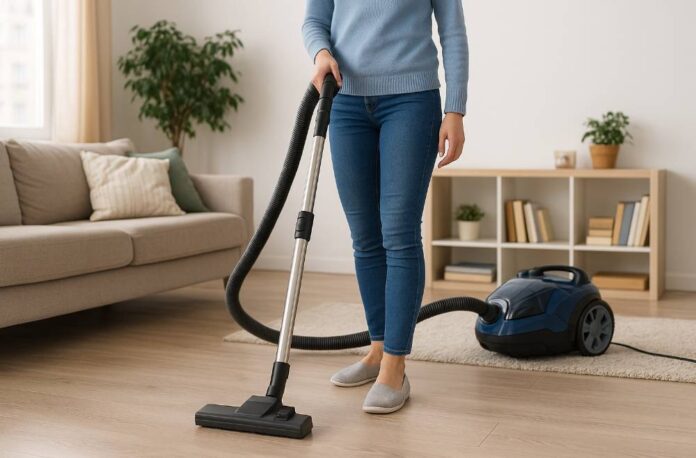The air circulating through our homes plays a surprisingly significant role in our daily health and comfort. While most of us worry about smog and outdoor pollution, here’s something that might surprise you: the air inside your home is often far more contaminated than what’s outside your front door.
One of the most powerful weapons against indoor allergens and dust accumulation is incorporating a high-quality vacuum into your regular floor care routine. Grasping this vital connection between thorough floor maintenance and the air you breathe is the first step toward creating a genuinely healthier home environment.
Why Indoor Air Quality Matters
The air inside your home has a direct impact on how you feel every single day. Consider this: most of us spend roughly 90% of our lives indoors, which makes the quality of that air absolutely crucial to our well-being. Your home harbors an invisible collection of pollutants—dust mites, pet dander, pollen that drifts in from outside, mold spores lurking in damp corners, and volatile organic compounds that seep from everything from cleaning products to furniture.
When indoor air quality takes a nosedive, your body notices. Those with allergies or asthma feel it first and worst—persistent sneezing fits, nagging coughs, watery eyes, and that frustrating struggle to breathe easily. But even people with healthy respiratory systems aren’t immune. Poor air quality can leave you feeling inexplicably tired, battling headaches, or just generally uncomfortable in your own space.
Key Takeaway: Indoor air pollutants can reach levels 2-5 times higher than what you’d find outdoors, making effective indoor air management not just helpful, but essential.
The Role of Floors in Indoor Pollution
Think of your floors as giant collection plates for everything floating around in your home’s air. Carpeted areas are particularly notorious for this—they’re like massive filters that trap dust, allergens, and microscopic debris, creating hidden reservoirs that can suddenly release clouds of particles when you walk across them or rearrange furniture. Hard surfaces such as wood, tile, or laminate might look pristine, but they’re quietly accumulating their own layers of dust and allergens, particularly in those often-forgotten corners and along baseboards.
Here’s where it gets interesting: particle resuspension happens constantly throughout your day. Every footstep, every piece of furniture you move, even the gentle air currents from your heating and cooling system can lift settled particles right back up into the air you’re breathing. This explains that maddening phenomenon where dust seems to magically reappear just days after you’ve cleaned, and why maintaining consistent floor care isn’t just about appearance—it’s about the air itself.
Effective Floor Cleaning Methods
Vacuuming: Best Practices for Cleaner Air
Regular vacuuming stands as your most powerful tool for eliminating the dust and allergens that accumulate on every type of flooring. Thorough vacuuming of both carpeted and hard surfaces is your frontline defense against airborne particles. Cleaning professionals have identified several game-changing practices that can dramatically improve your results:
The right attachments make all the difference in the world. Crevice tools become your secret weapon for reaching into corners and along baseboards where dust loves to hide, while brush attachments work wonders on upholstered furniture and more delicate surfaces. When tackling carpeted areas, try vacuuming in multiple directions—this technique helps lift stubborn, embedded particles that a single pass might leave behind.
Real families dealing with allergies have discovered something remarkable: when they committed to consistent, proper vacuuming routines, they noticed meaningful improvements in their symptoms within just a few weeks. This isn’t just theory—it’s tangible proof that effective floor care translates directly into better health.
Additional Floor Care Techniques
While vacuuming forms the backbone of effective floor care, several complementary approaches can amplify your results:
- Mopping hard surfaces captures those fine particles that even the best vacuum might leave behind
- Strategic doormat placement acts as your first line of defense, dramatically reducing the outdoor contaminants that make it into your living space
- Regular sweeping in high-traffic zones prevents particles from building up between your more thorough cleaning sessions
Choosing the Right Tools for the Job
Effective floor care hinges on having equipment designed with specific features that actually enhance cleaning performance. HEPA (High-Efficiency Particulate Air) filters represent the gold standard—they capture an impressive 99.97% of particles measuring 0.3 microns or larger, making them indispensable for households serious about air quality. Equally important is strong suction power, which ensures effective particle removal across different surface types and textures.
Don’t overlook the maintenance side of the equation. Keeping filters clean and emptying dust containers regularly isn’t just about performance—it prevents your equipment from becoming a source of contamination, redistributing captured particles right back into your carefully cleaned environment.
Practical Tips for Maintaining a Healthy Home
Building and sustaining effective cleaning routines comes down to smart planning and unwavering consistency. Developing consistent cleaning habits is your pathway to lasting improvements in indoor air quality. High-traffic areas naturally demand more frequent attention since they accumulate particles at a much faster rate than spaces that see less daily use.
Quick Tips:
- Target carpeted areas twice weekly, hard floors once weekly
- Tackle spills and tracked-in dirt the moment you notice them
- Keep your cleaning equipment in dry, clean storage areas
- Stay on top of filter replacements and cleanings as recommended by manufacturers
Creating a Healthier Living Space
The relationship between proper floor care and indoor air quality isn’t just theoretical—it’s a practical, science-backed approach to home health management. Regular, effective cleaning practices built around proper vacuuming techniques and enhanced by complementary methods create measurable, noticeable improvements in the air you breathe every day.
The beauty lies in how small, consistent changes in your cleaning approach can yield substantial long-term benefits for respiratory health, daily comfort, and overall quality of life. When you understand the science driving indoor air quality and put evidence-based cleaning practices into action, you’re not just maintaining a home—you’re actively creating a healthier environment that supports better outcomes for everyone who lives there.
